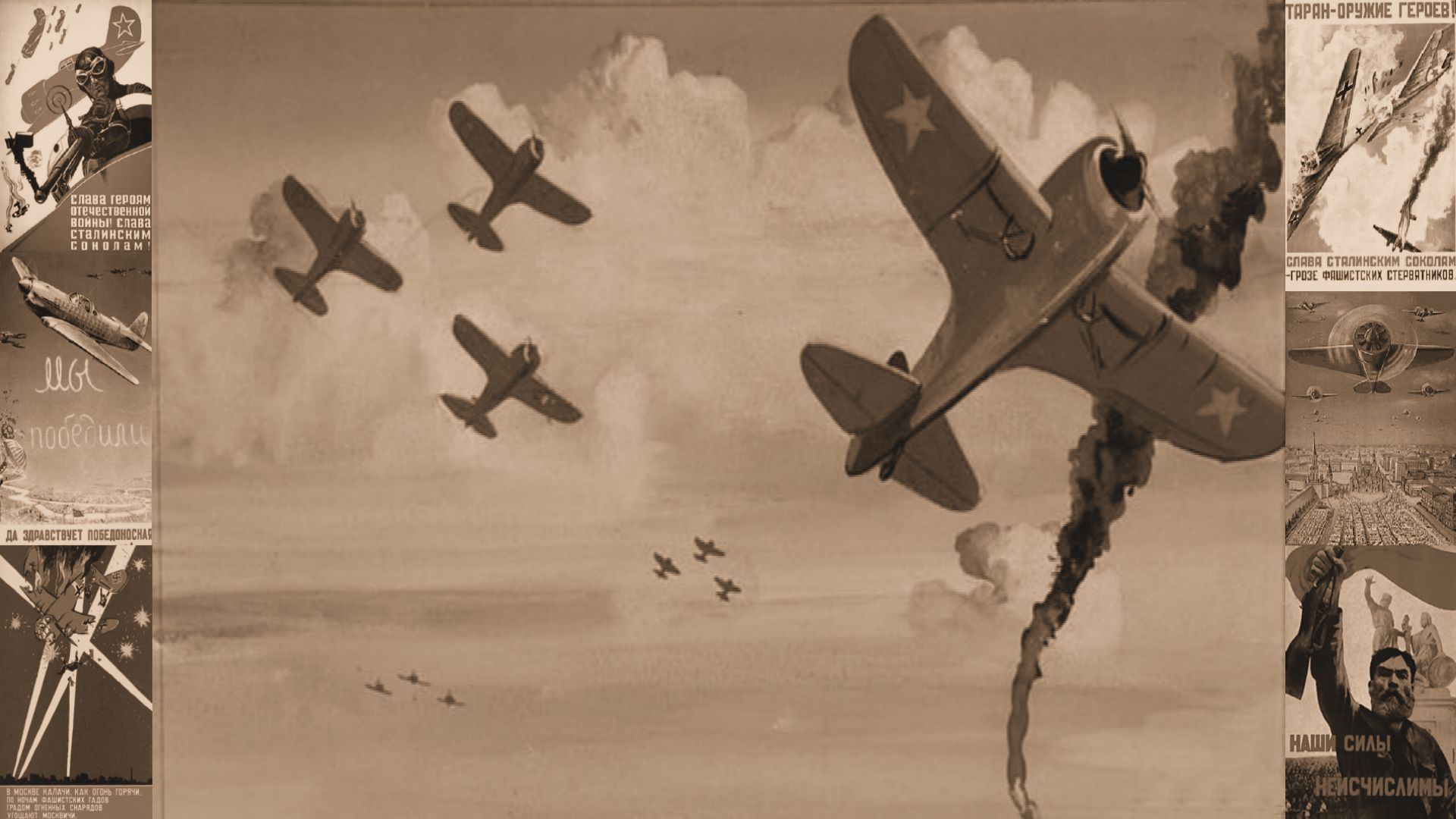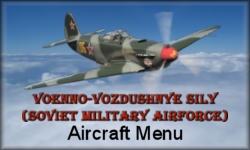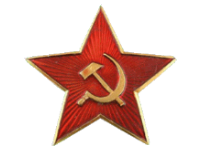



|

|

|
 The Soviet Air ForceThe All-Russia Collegium for Direction of the Air Forces of the Old Army (translation is uncertain) was formed on 20 December 1917. This was a Bolshevik aerial headquarters initially led by Konstantin Akashev. Along with a general postwar military reorganisation, the collegium was reconstituted as the "Workers' and Peasants' Red Air Fleet" ("Glavvozduhflot"), established on 24 May 1918 and given the top-level departmental status of 'Main Directorate'. It became the Directorate of the USSR Air Forces on 28 March 1924, and then the Directorate of the Workers-Peasants Red Army Air Forces on 1 January 1925. On 19 November 1939, VVS(("Voenno-Vozdushnye Sily") - "military-air forces") headquarters was again titled the Main Directorate of the Red Army Air Forces under the WPRA HQ. Gradually its influence on aircraft design became greater.
Between the Wars 1930s Soviet aviation also had a particular impact on the USSR's military failures in the beginning of World War II. By 1938, the Soviet Union had the largest air force in the world, but Soviet aeronautical design was distinctly lagging behind Western technological advances. Instead of focusing on developing tactical aircraft, the Soviets engineers developed heavy bomber planes only good for long distance in other words, planes that would be used for record-breaking flights like those of Valery Chkalov's 63-hour flight from Moscow, Soviet Union to Vancouver, Washington, United States via the North Pole on an Tupolev ANT-25 plane (June 18-20, 1937), a non-stop distance of 8,811 kilometres (5,475 mi). The Soviet government's focus on showy stunts and phenomenal record-breaking missions drained resources needed for Soviet defense. Also the Soviets were involved in a number of smaller wars prior to the invasion by the Germans. In the Spanish Civil War, Stalin supported the Spanish Republic, supplying men and materiel to help and develop tactics for the next war. One of the first major tests for the VVS in the Spanish Civil War was in which the latest aircraft designs, both Soviet and German, were employed against each other in fierce air-to-air combat. At first, the I-16 proved superior to any Luftwaffe fighters, and managed to achieve local air superiority wherever they were employed. However, the Soviets refused to supply the plane in adequate numbers, and their aerial victories were soon squandered because of their limited use. Also, Stalin was mistrusting his veterans and when they returned they were dismissed, exiled or even executed, thereby losing valuable combat experience that would plague the VVS up to the Nazi invasion. The Soviets fared better in the Nomonhan Incident between Japan and Russia. The I-16's were a match for the Mitsubishi A5M and Nakajima Ki-27 however, the I-153s were outclassed. The tactics used by the Japanese allowed them to take control of the skies. Again, the lessons learnt were ignored. In the Russo-Finnish War, the smaller and poorer equiped Finnish Air Force was more than a match for them. By using aggresive tactics, the Finnish Air Force managed to shoot down 218 Soviet aircraft during the Winter War while losing only 47 to enemy fire. Again, the lessons were ignored. Back to TopWorld War Two When the Nazis attacked the Soviet Union in June1941, it quickly became apparent that the Soviet Air Force was not prepared for war. Poor planning and lack of organization left planes sitting on the tarmac at airbases, allowing the Luftwaffe to destroy 4,000 Soviet planes within the first week. The disorganized Soviet defenses and technologically deficient aircraft were no match for the Luftwaffe. Over the next two years, the Soviets used whatever remaining aircraft available such as I-153's, I-16's, MiG-1's,Yak1's and LaGG-3's as well as being supplied with numerous 'Lend-Lease' aircraft from Hurricanes and Spitfires from Great Britain to the P-39 'Airacobras' and P-40 'Warhawks' from America in ever increasing numbers. During the invasion many plants and design bureaus that were evacuated from the west to the east, started producing arms for the front, which made it possible to quickly make up for the former losses. Chief Marshal of Aviation Alexander Novikov led the VVS from 1942 to the end of the war, and was credited with introducing several innovations and weapons systems and in 1943 the strategic superiority of the Russian Air Force became evident. A great number of German warplanes that were shot down during the air battles in the Kuban sector, the North Caucasus, the Kursk Bulge, and the operations on the Dnieper River offered proof of the grown mastership of the Soviet war pilots and war commanders. Eventually, combined with numerous new types such as the La-5, MiG-3, Yak-9, IL-10 and Pe-2's along with more combat experience and the ever dwindling Luftwaffe replacements led to the Soviet Air Force gaining air superiority from around mid 1943 to the end of the war. Back to TopPost War Korea After the outbreak of the Korean Conflict, North Korea suffered severe losses at the hands of the USAAF. UN aircraft roamed at will destroying supply lines and constantly bombing attacking troops. In October 1950, the Soviet Union had agreed to provide air regiments equipped with high performance MiG-15 fighters, along with the trained crews to fly them to North Korea. Simultaneously, the Kremlin agreed to supply the Chinese and North Koreans with their own MiG-15s, as well as training for their pilots. A MiG-15 of First Lieutenant Semyon Fyodorovich Khominich scored the first jet-vs-jet victory in history when he shot down an F-80C on November 1, 1950. The USSR never acknowledged that its pilots ever flew over Korea during the Cold War. Americans who intercepted radio traffic during combat confirmed hearing Russian-speaking voices, but only the Communist Chinese and North Korean combatants took responsibility for the flying. Most of the first regimental, squadron commanders and pilots in 1951 were World War II combat veterans, and were well prepared and trained. From November 1950 to January 1952, no less than 40 Soviet MiG-15 pilots were credited as aces, with five or more victories.
|